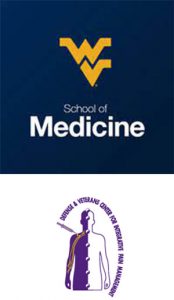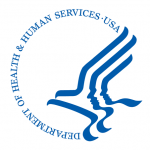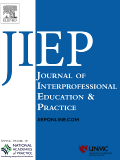AACIPM Submits Second Response to AHRQ on Integrated Pain Management Programs Systematic Review
 On June 21, AACIPM submitted a collective response to AHRQ during the comment period for their systematic review related to integrated pain management programs.
On June 21, AACIPM submitted a collective response to AHRQ during the comment period for their systematic review related to integrated pain management programs.
As you may recall, AHRQ posted the proposed research protocol for Integrated Pain Management Programs during the week of Thanksgiving 2020. After group discussions and a writing group assembled quickly, AACIPM submitted a collective response to AHRQ in December 2020 within a matter of days.
This time around, just as we had done months earlier in response to the proposed research protocol, AACIPM gathered dozens of stakeholders to discuss this systematic review from each of their unique perspectives. AHRQ posted its final review draft on May 21, and we quickly scheduled a group call during early June during which more than 30 experts came together to discuss a collective response, representing patients, providers, payers, and researchers. Another writing group assembled quickly, and the second AACIPM sign-on letter was submitted on June 21 to meet AHRQ’s 30-day deadline.
AACIPM is respectfully asking for consideration of modifications to the way in which the final report is presented that will more accurately reflect the review’s findings in order to clarify the breadth and nuance of this review for its intended audiences.
The AACIPM response letter begins:
We, the undersigned members of the Alliance to Advance Comprehensive Integrative Pain Management, are writing to you in response to the Integrated Pain Management Programs Systematic Review draft report that was published for stakeholder review on May 21, 2021.
AACIPM is incredibly grateful for the efforts of the Agency for Healthcare Research and Quality (AHRQ) in designing and conducting this systematic review of comprehensive and integrated pain management programs. An integral part of the Dr. Todd Graham Pain Management Study, this review from AHRQ will substantially influence the design of Medicare benefits, impacting access to evidence-based modalities for the treatment of pain, including non-opioid pain management treatments. However, the findings of AHRQ will impact payment design and healthcare delivery far beyond the Medicare program. In the Federal health improvement and healthcare delivery sector, AHRQ and Medicare decisions will have ripple effects, heavily influencing access to care for those covered by Medicaid, Tricare, and the Department of Veterans Affairs. Beyond the federal healthcare system, AHRQ reviews impact the large commercial sector and the myriad of self-funded companies and institutions also providing healthcare coverage. AHRQ’s findings are heavily relied upon as trusted systematic reviews that impact standard of care, as they are often cited by hundreds of peer-reviewed journal articles and by national guidelines. When looking at the potential impact on patient care, the influence of AHRQ’s work cannot be understated.
Read the specific asks and issues underscored by clicking the button below.
Building a Repository of Exemplary Pain Management Programs
Duke Presents the First of Four Case Studies on Integrated Pain Management
 AACIPM is pleased to share that Duke Margolis Center for Health Policy and Duke Orthopaedic Surgery, School of Medicine have released the first of four case studies emanating from their 2020-21 Roundtable on Integrated Pain Management. Their first case study features the West Virginia University Center for Integrative Pain Management (WVUCIPM), whose exemplary work was previously highlighted by AACIPM during our May 2020 Symposium, Innovation and Progress in Person-Centered Pain Management, and also included within the American Medical Association’s collection of stories on their microsite, End the Epidemic.
AACIPM is pleased to share that Duke Margolis Center for Health Policy and Duke Orthopaedic Surgery, School of Medicine have released the first of four case studies emanating from their 2020-21 Roundtable on Integrated Pain Management. Their first case study features the West Virginia University Center for Integrative Pain Management (WVUCIPM), whose exemplary work was previously highlighted by AACIPM during our May 2020 Symposium, Innovation and Progress in Person-Centered Pain Management, and also included within the American Medical Association’s collection of stories on their microsite, End the Epidemic.
The WVUCIPM case study presents an in depth illustration of the details in this program, which was established in May 2017 in response to the state’s growing opioid crisis and in recognition of the need for improved care for residents experiencing chronic pain. The program has been able to achieve high patient satisfaction in maximizing patients’ function and minimizing pain through use of a team which includes physicians and advanced practice providers, chiropractors, social workers, clinical dieticians, movement specialists, and massage therapists. Duke will be releasing the remaining three case studies in the coming months.
Duke’s in-person Roundtable that spurred the creation of this series of case studies took place in February 2020 and included participation from numerous AACIPM leaders and experts. Further background on this Roundtable can be found on Duke’s website and AACIPM’s website, including reflections from AACIPM’s Advisory Committee member, Adam Seidner, MD, MPH, Chief Medical Officer, The Hartford.
Exemplary Clinical Examples – and Unique Characteristics
Many people with pain continue to struggle without adequate options for pain management or access to quality care that is based on current clinical guidance, so it is imperative that we share examples and the business case for these approaches to care. With publication of these case studies, Duke is contributing to the growing repository of clinical examples that showcase an integrated, integrative and interdisciplinary approach to pain care, utilizing a wider array of evidence-based treatment options for people with pain than is often found.
In an article penned by the Duke team last year that was published in NEJM Catalyst, they wrote:
“The Whole Health System model is one example of what is possible for IPM programs. However, health care systems and payers looking to develop and implement IPM programs need exemplars of successful models across a variety of patient populations, reimbursement models, geographic regions, and delivery settings. To this end, we are working with initiatives such as the Alliance to Advance Comprehensive Integrative Pain Management (AACIPM) to identify IPM programs across the US and develop a knowledge base of best practices for program implementation. This resource will supply practical guidance for those organizations needing to develop, implement or sustain IPM programs.”
West Virginia University Center for Integrative Pain Management
 Some important characteristics about WVUCIPM are:
Some important characteristics about WVUCIPM are:
- Initiated through strong support of state and organizational leadership.
- Co-location of services.
- Case managers help navigate patients through the WVUCIPM.
- Pain assessment measures adapted through partnership with the Defense and Veterans Center for Integrative Pain Management.
Learn more about WVUCIPM by clicking on the case study button below, and look for additional case studies coming soon!
Highlights from HHS Pain-Related Efforts
 AACIPM acts as a connector, even between staff at Health & Human Services (HHS) agencies, who tell us they appreciate being kept abreast of what each specific agency is doing as it relates to pain care. This section is intended to help synthesize HHS highlights, and we welcome your feedback for future updates.
AACIPM acts as a connector, even between staff at Health & Human Services (HHS) agencies, who tell us they appreciate being kept abreast of what each specific agency is doing as it relates to pain care. This section is intended to help synthesize HHS highlights, and we welcome your feedback for future updates.
AHRQ and CMS
 The first entry in this newsletter includes information about AHRQ’s review on Integrated Pain Management. This review is part of a wider effort that includes Improving Pain Management in the Context of America’s Opioid and Substance Use Disorders Crisis.
The first entry in this newsletter includes information about AHRQ’s review on Integrated Pain Management. This review is part of a wider effort that includes Improving Pain Management in the Context of America’s Opioid and Substance Use Disorders Crisis.
CMS has commissioned AHRQ to undertake three topic briefs and two systematic reviews to inform Medicare coverage and payment for treatment of acute and chronic pain. The work was done in support of the Dr. Todd Graham Pain Management Study, section 6086 of the SUPPORT Act.
NIH HEAL Initiative
Investigator Meeting and Research Spotlight
 The Second Annual NIH HEAL Initiative Investigator Meeting was held in May 2021. This meeting convened more than 500 NIH HEAL Initiative awardees, federal officials, people with lived experience, and other stakeholders to share research findings, explore trends and shared interests, and identify opportunities to advance the goals of taking on the pain and opioid crises from all angles. Topics of discussion included innovative technology-based therapies for pain management; community-based integrated solutions for prevention, overdose, and medication-based treatment for opioid use disorder; and a variety of new approaches for managing pain. See videos and takeaways from this event.
The Second Annual NIH HEAL Initiative Investigator Meeting was held in May 2021. This meeting convened more than 500 NIH HEAL Initiative awardees, federal officials, people with lived experience, and other stakeholders to share research findings, explore trends and shared interests, and identify opportunities to advance the goals of taking on the pain and opioid crises from all angles. Topics of discussion included innovative technology-based therapies for pain management; community-based integrated solutions for prevention, overdose, and medication-based treatment for opioid use disorder; and a variety of new approaches for managing pain. See videos and takeaways from this event.
NIH Heal Initiative Research Spotlight: Electronic Health Record Systems Let Patients Choose Complementary and Integrative Pain Treatments
Excerpt: “Complementary and integrative health approaches can be effective treatments for pain. But while these approaches – like chiropractic care, meditation, massage, relaxation, tai chi, and yoga – have been shown to alleviate some types of pain, doctors don’t always know how to provide them to their patients. This is particularly true after major surgery.”
NIH Pain Consortium
Webinar Series on Grants for Pain Research
![]() The National Institutes of Health (NIH) Pain Consortium is holding a webinar series (July 2021-March 2022) on the types of grants available for pain research for investigators at different stages of their careers.
The National Institutes of Health (NIH) Pain Consortium is holding a webinar series (July 2021-March 2022) on the types of grants available for pain research for investigators at different stages of their careers.
To view video recordings of past webinars in this series, visit the NIH Pain Consortium website. To register for upcoming webinars, use the link below.
NIH Center for Complementary & Integrative Health
NCCIH – What is Whole Health?

Excerpt from NCCIH site – “Whole person health involves looking at the whole person—not just separate organs or body systems—and considering multiple factors that promote either health or disease. It means helping and empowering individuals, families, communities, and populations to improve their health in multiple interconnected biological, behavioral, social, and environmental areas. Instead of treating a specific disease, whole person health focuses on restoring health, promoting resilience, and preventing diseases across a lifespan.”
Trans-NIH Workshop in July on Pain Management in Sickle Cell Disease

June 22, 2021
Inna Belfer, M.D., Ph.D.
Della White, Ph.D.
The National Center for Complementary and Integrative Health (NCCIH) and the National Heart, Lung, and Blood Institute will lead a virtual, trans–National Institutes of Health (NIH) workshop on July 21–22, 2021 on “Approaches to Effective Therapeutic Management of Pain for People with Sickle Cell Disease.”

If you’re a scientist in the field, a researcher who is currently outside the sickle cell disease (SCD) field but interested in the
topic, a health care provider, or an interested member of the public, we invite you to attend. Registration is required, and there is no charge.
This workshop will be livestreamed and archived.
CDC and FDA
 The Food and Drug Administration (FDA) held a public workshop on June 7-8, entitled ‘‘Morphine Milligram Equivalents: Current Applications and Knowledge Gaps, Research Opportunities, and Future Directions.’’ The purpose of the workshop is to bring stakeholders together to discuss the scientific basis of morphine milligram equivalents (MMEs) with the goals of providing an understanding of the science and data underlying existing MME calculations for opioid analgesics, discussing the gaps in these data, and discussing future directions to refine and improve the scientific basis of MME applications.
The Food and Drug Administration (FDA) held a public workshop on June 7-8, entitled ‘‘Morphine Milligram Equivalents: Current Applications and Knowledge Gaps, Research Opportunities, and Future Directions.’’ The purpose of the workshop is to bring stakeholders together to discuss the scientific basis of morphine milligram equivalents (MMEs) with the goals of providing an understanding of the science and data underlying existing MME calculations for opioid analgesics, discussing the gaps in these data, and discussing future directions to refine and improve the scientific basis of MME applications.
 Centers for Disease Control (CDC) – Related to this topic above from FDA, two of AACIPM Advisory Committee members, Kate Nicholson, JD, and Christine Goertz, DC, PhD, are on the CDC’s workgroup that is currently looking at modifications to the 2016 CDC Guidelines for Opioid Use for Chronic Pain.
Centers for Disease Control (CDC) – Related to this topic above from FDA, two of AACIPM Advisory Committee members, Kate Nicholson, JD, and Christine Goertz, DC, PhD, are on the CDC’s workgroup that is currently looking at modifications to the 2016 CDC Guidelines for Opioid Use for Chronic Pain.
The National Center for Injury Prevention and Control will discuss the Opioid Workgroup’s report on the updated guideline on July 16, 2021 from 10 AM-4:50 PM EST. You may now register for the upcoming meeting. Topics for discussion include an overview of the process and progress for updating the CDC Guideline for Prescribing Opioids and discussion of the BSC Opioid Workgroup’s report of the draft Guideline.
Patient/Provider Survey & Study Opportunities
 Online Patient Survey on Cannabinoids
Online Patient Survey on Cannabinoids
Researchers from the University of Rochester and Harvard Medical School are conducting a survey to help better understand how people living with chronic pain feel about using cannabinoids, including marijuana and CBD, to treat their pain. They also want to learn how well cannabinoids have worked for those who have tried them. The goal of this survey is to learn about peoples’ experiences and opinions to inform future research, policy, and patient care with cannabinoids for chronic pain.
They are eager to hear from people who have never tried cannabinoids for pain, who have tried them and stopped, or who are currently using cannabinoids to treat pain.
Please share this opportunity with your patients or other networks that might be interested.
If you have chronic pain, no matter how you feel about cannabinoids, this is an important survey. Please only respond to the survey if you are at least 18 years old. The survey should take approximately 10-15 minutes to complete.
You can learn more about the study by reading the information sheet here.
Clinical Research Survey Available
Research is critical to improve the lives of patients with Ehlers-Danlos syndromes (EDS) and hypermobility spectrum disorders (HSD). Ehlers-Danlos Society, in partnership with the FRAME foundation, is seeking to learn about patients’ perspective on the role of muscles in pain, related to EDS.
The objectives of the survey are as follows:
- To determine the perception of the etiology of common pain syndromes.
- To discover if soft tissue pathology is part of the diagnostic consideration.
- To establish if the perception of the origin of pain affects eventual treatment.
The survey will take 5-10 minutes to complete, all data is captured anonymously, and the results will be shared with The Ehlers-Danlos Society upon completion.
If you have any questions or feedback regarding the survey, please email Mandy Garden.
Strategies To Assist with the Management of Pain (STAMP)
All-Virtual Study for People with Chronic Lower Back Pain, Treated with Daily Opioid Medications
 Enrollment will be closing soon.
Enrollment will be closing soon.
Telehealth is the Future – and the Future has arrived! The STAMP study, which aims to help people manage Chronic Lower Back Pain (CLBP), was recently approved to become completely virtual, utilizing tele-health options, in light of the ongoing COVID-19 pandemic. The study is available to adults from across the U.S. through its all-virtual option!
The STAMP study offers promise for adults with CLBP who are treated with daily opioids to better relieve pain, reduce disability, and improve quality of life. It compares the effects of two therapies, cognitive behavioral therapy and mindfulness meditation, on CLBP-related pain, function, and quality of life. Both therapies are delivered virtually over eight weekly group sessions. Participants receive one of these two therapies free of charge and, in addition, are reimbursed for their time and effort. The study is conducted by research teams at the University of Wisconsin (Madison, WI), Brigham and Women’s Hospital (Boston, MA), University of Utah (Salt Lake City, UT), and Pennsylvania State University (Hershey, PA).
Integrative and Interprofessional Education
IASP and NAM’s Global Forum on Innovation in Health Professional Education Calls for Submissions of Pain Management Models
 Virtual Special Issue: Interprofessional Pain Management: Educational Models and Exemplars Across the Learning and Practice Continuum
Virtual Special Issue: Interprofessional Pain Management: Educational Models and Exemplars Across the Learning and Practice Continuum
Guest Editors: Dr. Kim Dunleavy PT, PhD, OCS, FNAP and Dr. Emma Briggs PhD, BSc, RN, PGCAP
The Journal of Interprofessional Education and Practice (JIEP) is collaborating with the working group of the Global Forum on Innovation in Health Professional Education of the National Academies and the International Association for the Study of Pain Educational Programs for a virtual special issue. They are seeking submissions highlighting successful educational models and exemplars of interprofessional educational activities addressing pain and pain management. Submissions from across the spectrum of learning will help elucidate lessons learned from best practices, present novel approaches for interprofessional pain management education, expand evidence of effectiveness and bridge the gap between education and practice. Papers should describe practical methods and outcomes of programs and activities in any element of the continuum, i.e. entry level, residency, post-professional continuing education and workplace learning. Articles accepted for publication will be branded as a Special Issues Article in regular journal issues, as well as collated in a virtual special edition.
IM4US Conference
 Decolonizing Medicine: Toward Equity and Inclusivity in Integrative Healthcare
Decolonizing Medicine: Toward Equity and Inclusivity in Integrative Healthcare
AACIPM is working in collaboration on a panel, Advancing Integrative Pain Management through Collaboration and Advocacy, at this year’s Integrative Medicine for the Underserved (IM4US) conference, September 24-25.
IM4US welcomes contributions on the following themes as well as other areas related to equity and inclusivity in integrative healthcare:
- Using anti-racist and/or re-Indigenizing strategies to address social and structural determinants of health;
- Lifting up models of financially accessible, trauma-informed, culturally-safe and culturally-responsive healthcare;
- Building trustworthy healthcare organizations;
- Transforming biomedical supremacy, environmental racism and cultural misappropriation in healthcare;
- Expanding what ‘evidence’ means for marginalized communities and practices;
- Redefining professional expertise through dignified collaboration between diverse healthcare practitioners, patients, and communities; and
Recognizing and honoring community-based health sovereignty.
Message from the Director
 Happy summer to all of you! I hope this bulletin finds you enjoying this time of year – my family and I are enjoying the most beautiful flowers to date in our backyard. The rain and sunshine has been plentiful and my husband has a green thumb and has been nurturing this for years.
Happy summer to all of you! I hope this bulletin finds you enjoying this time of year – my family and I are enjoying the most beautiful flowers to date in our backyard. The rain and sunshine has been plentiful and my husband has a green thumb and has been nurturing this for years.
AACIPM is continuing to nurture the relationships and activities that advance whole person-centered pain management. We began this iteration two years ago and I am beyond grateful to announce that this project has been selected by Lovell Foundation to continue for two more years!
Among many things (more information coming soon), we will be improving our newsletter and website as better tools for this growing repository and welcome any and all feedback from you as to what you like, don’t like or would like to see shared in these monthly updates. For example, do you like the Relevant Reading section? It takes many hours to compile – is this important to you? What about updates from HHS agencies?
I hope you’ll take a moment to read about our efforts with AHRQ this month (first section above) and the first released case study from Duke. There is important work underway and connecting stakeholders, meaningfully, will continue to bring us closer to our shared goals.
Onward and Upward!
Relevant Reading
![]() Why women are more likely to suffer from long Covid, The Guardian, June 29
Why women are more likely to suffer from long Covid, The Guardian, June 29
Sufferers of chronic pain have long been told it’s all in their head. We now know that’s wrong, The Guardian, June 28
Urgent Need for Better Support and Care for Patients With Fibromyalgia, Clinical Pain Advisor, June 28
State Legislature Makes Historic Investment In Behavioral Health Care: ‘We’re Going To Save Lives’, Denver CBS4, June 28
Long Covid May Help Us Understand Other Chronic Diseases, Bloomberg, June 22
Pain Management Education for APRNs Is Still Lacking, Clinical Advisor, June 21
Can Positive Psychology Help with Managing RA?, Healthline, June 18
DOD Chronic Pain Management Research Program Funding Opportunities for FY21, CDMRP, June 15
Restorative Yoga Is All About Relieving Stress With Gentle Stretches-Here Are 6 Beginner Poses to Try, Real Simple, June 16
Yoga for Endometriosis: Try These Stretches to Relieve Pain, Healthline, June 15
The Final “P” in Pain Management, Psychiatric Times, June 15
3 Myths About Chronic Illness and Resilience, Psychology Today, June 15
I Felt Like An Outcast Most Of My Life—Then My Diagnosis Gave Me A Community, MBG Health, June 12
Medicine’s Failure With Women in Pain, WSJ, June 12
Association of the 2016 US Centers for Disease Control and Prevention Opioid Prescribing Guideline With Changes in Opioid Dispensing After Surgery, JAMA Network Open, June 11
Health Care Providers’ Facial Appearances Shape Patient Expectations About Pain and Pain Treatment, NCCIH, June 11
Yoga for migraine: What to know, Medical News Today, June 10
Some Patients Are Reporting Long COVID Recoveries—But Experts Still Don’t Fully Understand Why, Time, June 9
Why ‘Unwell Women’ Have Gone Misdiagnosed for Centuries, NY Times, June 8
7 Ways People Find Pain Relief for Psoriatic Arthritis, Self, June 4
Integrative Medicine for Brain Health: Why Neurologists Should Care, Medscape, June 2
New Digital Health Platform Targets 50 Million Americans With Chronic Pain, Forbes, June 1
Predictors of Persistent Postsurgical Pain Following Hysterectomy – A Prospective Cohort Study, JMIG, May 30
Podcast: Integrative Pediatric Pain Management with Dr. Lonnie Zeltzer, Audible, May 17
Feedback
We welcome your input! What do you like? Do you have a contribution for an upcoming newsletter? Send us your comments, suggestions, or contributions.